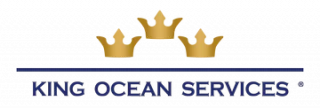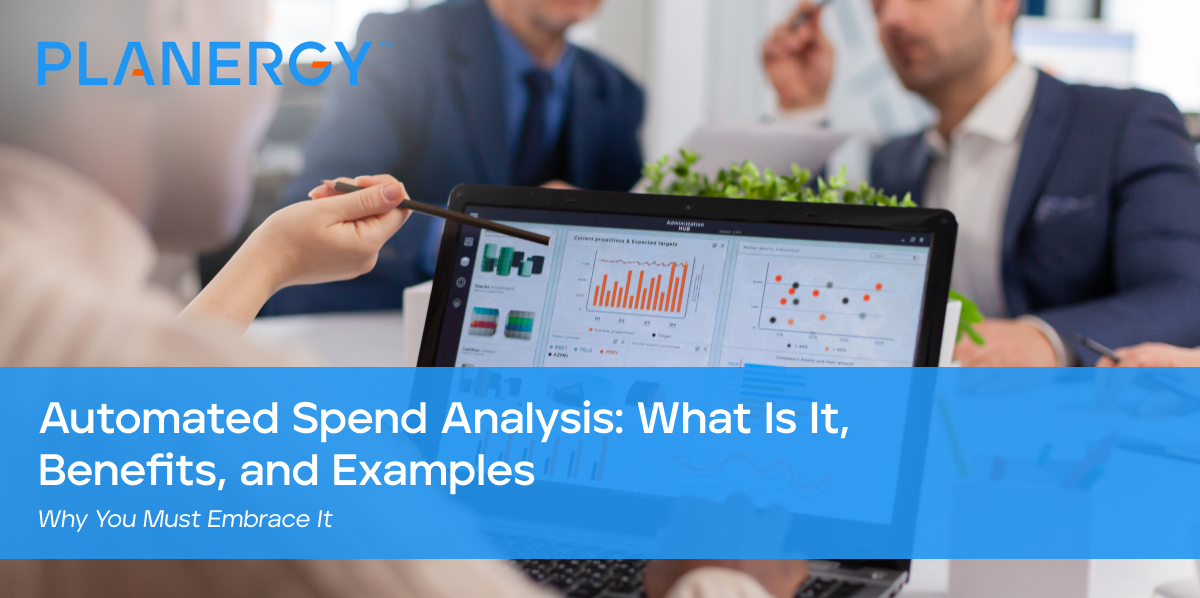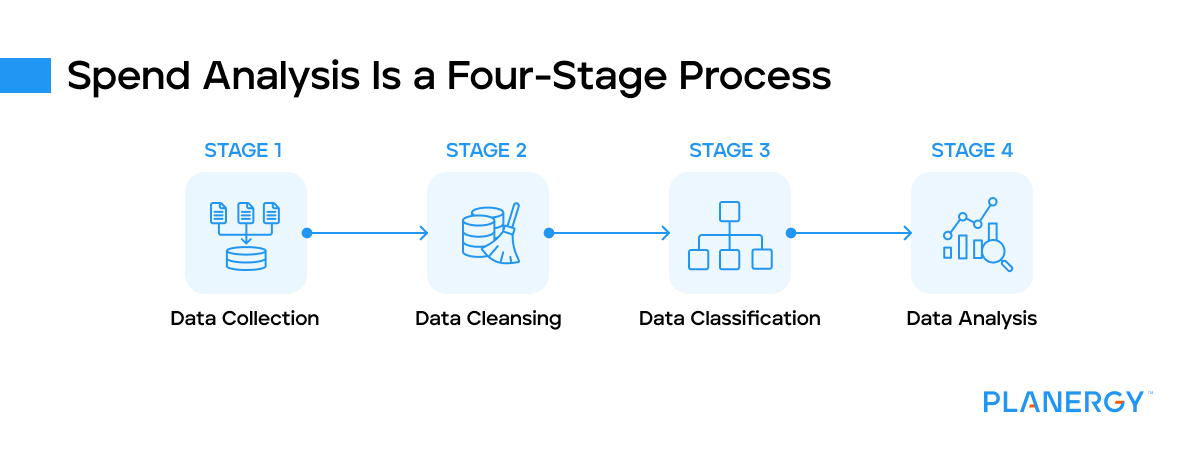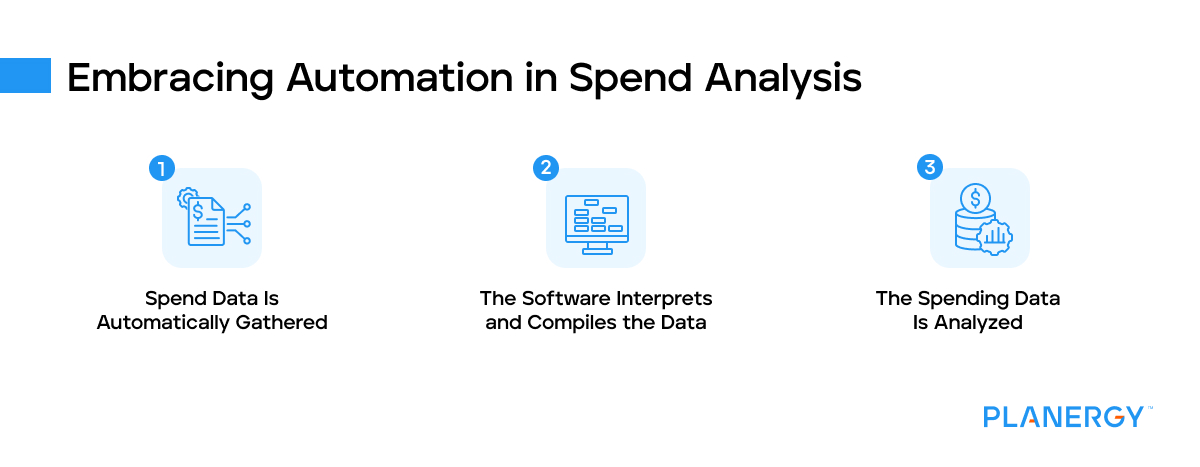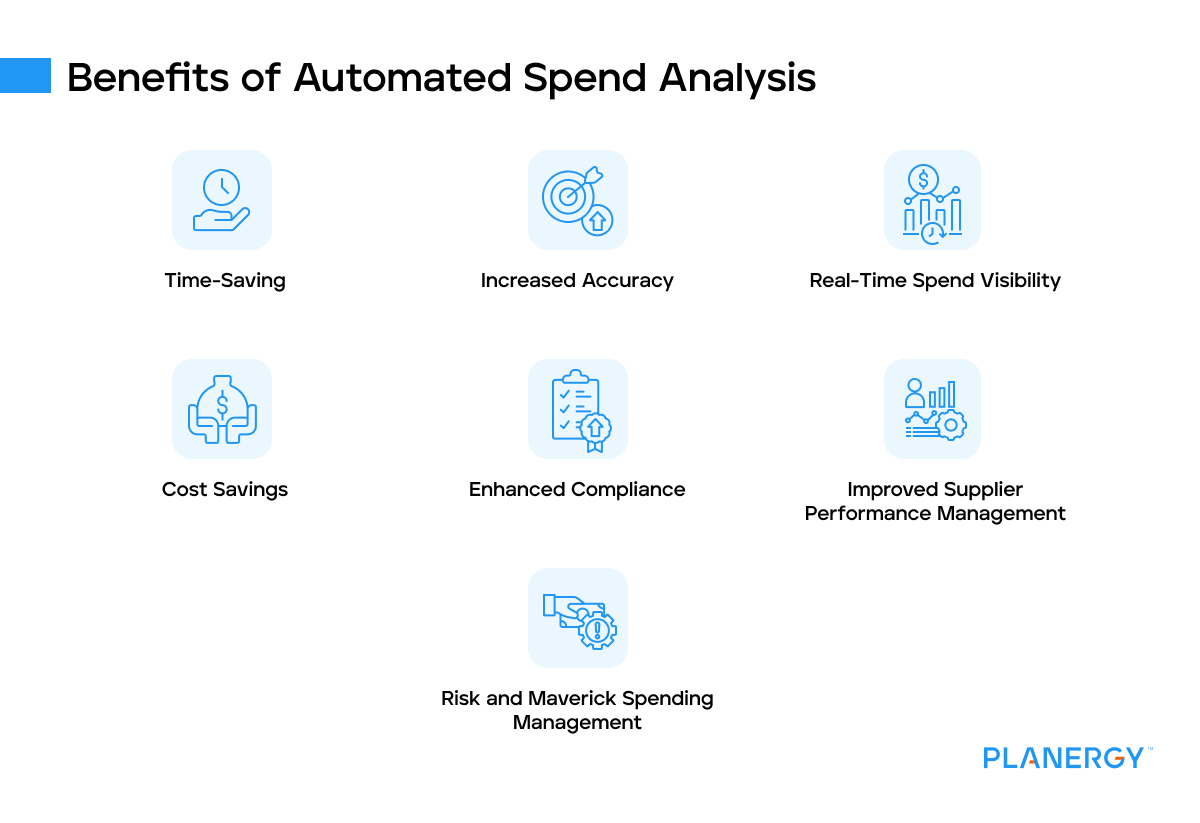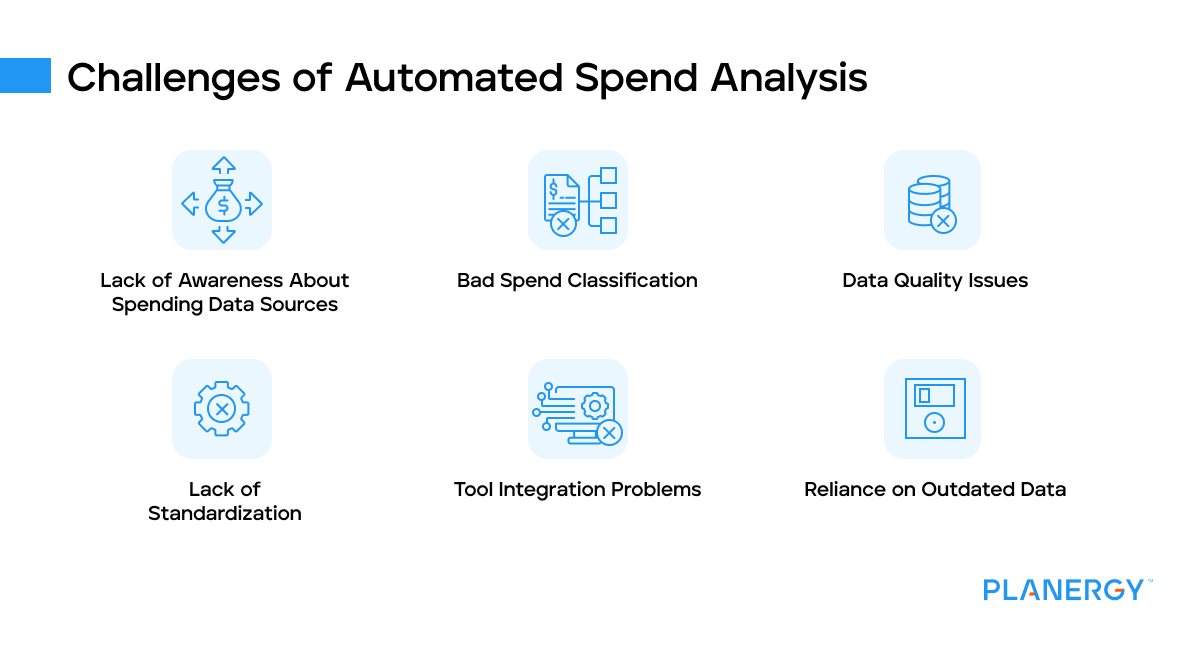Automated spend analysis offers numerous advantages for businesses. It not only streamlines the process but also provides deeper insights into spending patterns and potential areas of savings.
Time-Saving
One of the most significant benefits of automated spend analysis is the time it saves. Traditionally, spend analysis involves manually collecting, cleansing, classifying, and analyzing data, which can be a time-consuming and labor-intensive process.
For example, consider a multinational corporation with operations in multiple countries.
Collecting and consolidating spend data from various sources across different regions could take weeks or even months if done manually.
On the other hand, an automated system can gather and process this data in a fraction of the time, freeing up valuable resources that can be used for other strategic tasks.
Increased Accuracy
Automated spend analysis reduces the risk of human error that can occur during aggregate data collection, cleansing, and classification.
By automating these processes, businesses can ensure the accuracy and reliability of their data.
For instance, suppose a company is looking at its IT expenditure. Manual data entry could potentially lead to errors such as duplicate entries or misclassified expenses.
However, an automated system can identify and correct such errors, ensuring the data’s accuracy and reliability.
Real-Time Spend Visibility
Automated spend analysis provides real-time visibility into spending patterns, enabling businesses to make more informed decisions.
With traditional manual methods, there’s often a lag between data collection and analysis, which can delay decision-making.
Consider a business that notices a sudden spike in its utility costs. The company can quickly identify and address the issue with real-time tracking and alerts from an automated system, preventing further unnecessary expenditure.
Cost Savings
Automated spend analysis can help businesses significantly reduce their expenses by identifying inefficiencies and opportunities for cost reduction.
The system can highlight areas where a business may be overspending or where there may be potential for negotiating better terms with suppliers.
For example, an automated system could identify a company purchasing the same product from multiple suppliers at varying prices.
With this insight, the company could negotiate a bulk purchase deal with a single supplier, resulting in substantial savings opportunities.
Enhanced Compliance
Automated spend analysis can also help businesses monitor and enhance their compliance with internal policies and external regulations.
The system can flag non-compliant purchases or contracts that don’t align with the company’s procurement policies, enabling timely corrective action.
For instance, a company might have a policy against doing business with suppliers with poor environmental records.
An automated spend analysis tool can flag any transactions with such suppliers, allowing the company to enforce its policy and uphold its commitment to sustainability.
Improved Supplier Performance Management
Organizations can gain insight into supplier performance to encourage stronger supplier relationships and proactive development.
With automated spend analysis, companies can easily generate a list of non-performing suppliers. Using this information, they can improve contract compliance with continuous price monitoring.
Supplier scorecards assist in evaluating suppliers and vendors because they capture performance metrics.
Comprehensive spend analysis provides additional information about how much money your organization spends with each supplier on various goods and services, and which suppliers get the most of your business.
Having this spend data readily available and easily accessible is particularly helpful in contract negotiations because it allows organizations to maximize their procurement budget.
Companies can collaborate with fewer suppliers for more strategic sourcing when implemented well.
This translates to greater value, establishing a leaner and more efficient procurement process.
Spend analytics benefits the entire supply chain. When it’s time to negotiate a contract, both parties can focus on their respective strategic goals without getting caught up in the fight for small wins.
Risk and Maverick Spending Management
Maverick spending comes into play when employees opt to go outside of the approved suppliers to purchase goods and services. When this happens, it affects profits and contract compliance and fulfillment.
Identifying maverick spend is essential; the only way to do this is to increase spend visibility.
Organizations must be able to identify any and all unmanaged costs, which requires a detailed spend analysis, including tail spend analysis.
Accountability helps in tracking mistakes to a particular person or source, to address the issue at the root cause.
Procurement organizations often use spend analysis as the first step in aligning the sourcing and competitive strategies.
When done properly, organizations can identify opportunities to leverage buying power to reduce costs, improve operational performance and supplier management, and also improve relationships with all stakeholders, both internal and external.
Most of today’s spend analysis technology allows for ERP cloud-native setups with real-time spend reporting to make for a simple spend analysis process.
The analytics tools make for easier data management and improved spend management.
